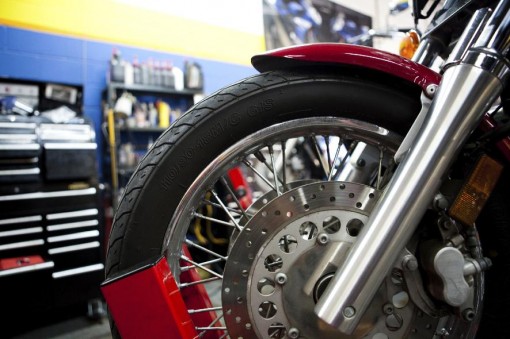Tyresafe says to check tyres before your hols
Tyresafe is warning bikers to think about the load they are putting on their tyres as they prepare for their summer holidays on two wheels.
The extra weight of a pillion passenger or panniers means that tyre pressures should be checked and adjusted to the manufacturer’s recommendations.
Under-inflation (or overloading) may cause rapid shoulder wear, excessive flexing and deterioration of the casing, which can pose a serious safety risk for bikers.
However, over-inflation may result in a reduced area of contact patch with the road and accelerated wear in the centre of the tread. The tyre could also be more susceptible to impact damage, as well as providing an uncomfortable ride.
It’s not just the tyre pressure that should be considered as motorcyclists should also check for tread depth, plus look for any damage in the tyre such as bulges, cuts or lumps.
Any foreign objects stuck in the tyre should be removed and irregular wear patterns can also be a sign of problems with other components, set up, or riding style.
More information about motorcycle tyre safety can be found by visiting the motorcycle section on TyreSafe’s website at www.tyresafe.org, which includes a free downloadable motorcycle tyre safety leaflet.
TyreSafe top tips for motorcycle tyre safety:
1. Check your tyre pressures from cold at least once a week using an accurate gauge
2. Inflate tyres to the level recommended in the manufacturer’s handbook
3. Inspect tyres for cuts, bulges, uneven wear or objects embedded into the tread pattern and replace if necessary
4. Use dust caps to keep dirt away from the valve core and to act as a secondary air seal
5. If your rims are cracked or bent they should be replaced immediately
6. Check that your tread depth is not below the legal minimum of 1mm (for bikes over 50cc)
7. Replace old or damaged valve stems
8. Select the correct type of tyre for your machine and riding style
9. Check that both tyres fitted to the bike are made by the same manufacturer and have the same tread pattern
10. Make sure that your tyre has been fitted the right way round by checking the directional arrows on the sidewall
11. When replacing tube type tyres always use a new inner tube
12. Make sure your tyre/wheel assembly is balanced correctly
13. Keep oil and grease off your tyres using detergent if necessary
14. If you are unsure on any aspect of tyre pressure or tyre condition take your bike to an approved fitting centre and speak to the experts.

